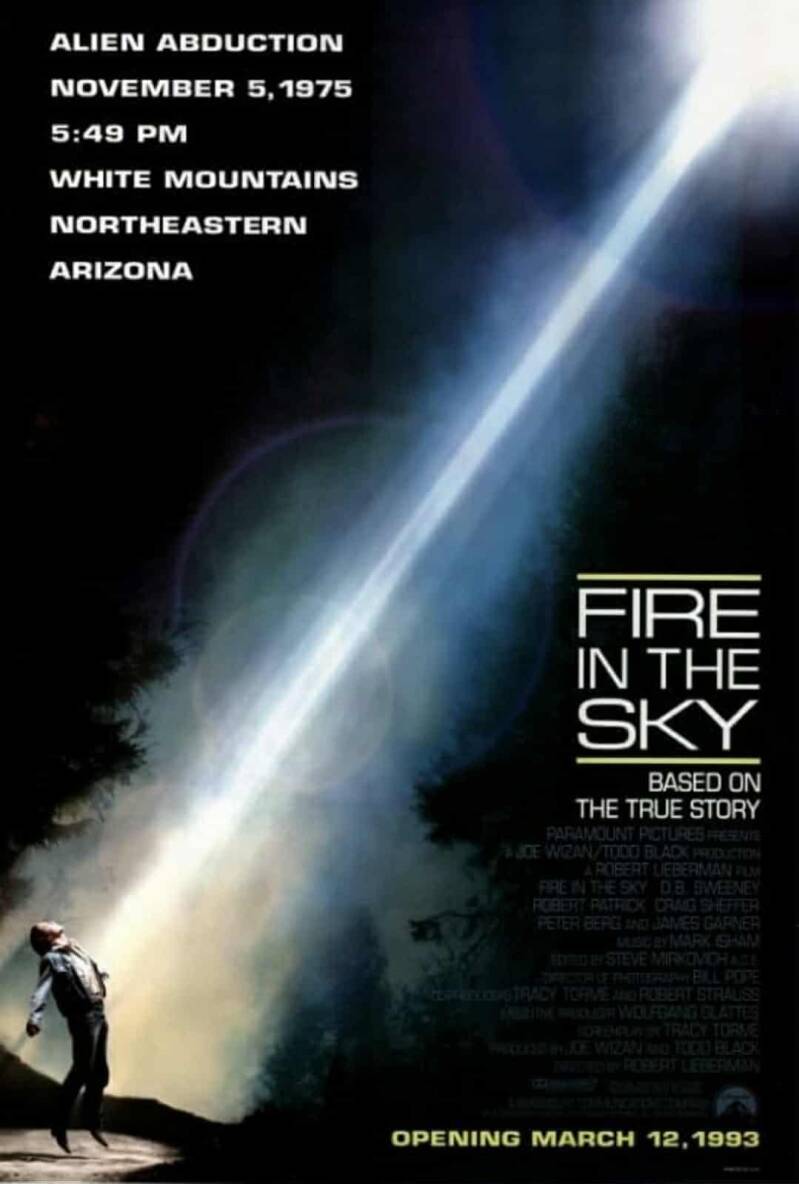Folklore, Cryptids, & Other Unexplained
The Travis Walton Experience

On November 5, 1975, Travis Walton, a logger in Snowflake, Arizona, was working with a crew in the White Mountains. As they drove home, the crew saw a glowing object in the forest. Walton approached it and was struck by a beam of light. Believing he was dead, the crew fled. Walton was missing for five days. He reappeared disoriented and claimed he had been aboard an alien spacecraft. The incident became one of the most famous alleged alien abduction cases in the U.S., and Walton passed multiple polygraph tests. His story was dramatized in the 1993 film Fire in the Sky, based on his book The Walton Experience.

The Myrtles Plantation
The Myrtles Plantation in St. Francisville, Louisiana, is one of the most famously haunted homes in the United States—a place where folklore, tragedy, and ghost stories intertwine with Southern Gothic charm. Built in 1796 by General David Bradford, the plantation is steeped in antebellum history and surrounded by moss-draped oaks. The house is said to be home to at least 12 ghosts, with countless reports of paranormal activity from visitors and staff. One of the most chilling legends involves a mirror in the main hallway. According to lore, after the murder of Sara Woodruff and her children, their spirits became trapped in the mirror because it wasn’t covered during mourning—a Southern tradition meant to prevent souls from getting stuck. Visitors claim to see handprints, faces, and strange smears that reappear even after cleaning. Paranormal investigators have reported cold spots and unexplained reflections, adding to the mirror’s haunted reputation. The grand staircase is another hotspot for ghostly sightings. Many claim to see the ghost of Chloe, a former enslaved woman allegedly involved in the poisoning of the Woodruff family. Her spirit is said to linger near the stairs. A famous photo taken in the 1990s allegedly shows a shadowy figure standing on the staircase, which some believe is Chloe. Guests have reported phantom footsteps, whispers, and a feeling of being watched while ascending or descending the stairs.
Hessdalen lights
The Hessdalen lights are a strange and persistent phenomenon observed in Norway’s Hessdalen Valley since the 1930s. These lights appear both day and night, glowing white, yellow, or red. They sometimes hover in place, sway gently, or shoot across the sky at high speeds. Sightings can last anywhere from a few seconds to several hours, and the lights often pulse or flicker in eerie patterns. Despite decades of scientific monitoring—including radar and video recordings—no definitive explanation has emerged. Some researchers suggest natural plasma caused by radon decay, while others point to rare atmospheric conditions. And of course, the UFO lore surrounding Hessdalen has earned it the nickname “Norway’s Roswell.”
Gef the Talking Mongoose
In the early 1930s, on a remote farm on the Isle of Man, the Irving family claimed to have encountered a creature unlike any other—a talking mongoose named Gef. First heard by James Irving while reading the newspaper outdoors, Gef’s voice rang out with biting wit: “Read it out loud, you fat-headed gnome!” James described Gef as “a little animal resembling a stoat, a ferret, or a weasel,” with yellow fur, a nine-inch-long body, and a bushy tail speckled with black. But Gef was no ordinary mongoose. He proclaimed himself an “extra extra clever mongoose!” and even an “Earthbound spirit.” Gef’s antics were legendary. He woke the family in the dead of night, hunted mice, and feasted on bacon and sausages. Some believed Voirrey Irving, the daughter of the household, was behind the phenomenon—accused of ventriloquism and trickery. Yet Voirrey denied it all, even after actor Leslie Graham, who bought the farmhouse in 1946, claimed to have shot Gef. Voirrey insisted the slain creature was too large and the wrong color—black and gray, not Gef’s signature yellow. Until her death in 2005, Voirrey maintained that Gef was real. Gef’s legacy lives on in pop culture, most notably in Lemon Demon’s song Eighth Wonder, which borrows one of Gef’s most chilling boasts: “I am a freak. I have hands and I have feet, and if you saw me you’d faint, you’d be petrified, mummified, turned into stone or a pillar of salt!"

The Importance of Cryptozoology
Throughout history, cultures around the world have told stories of mysterious and elusive creatures—many of which were long dismissed as myth or legend. Yet, time and again, some of these so-called cryptids have been proven real. The gorilla, once thought to be a fearsome jungle myth, was confirmed by Western science in the mid-19th century. The okapi, a shy forest-dwelling relative of the giraffe, remained hidden from modern science until the early 1900s. And the coelacanth, a prehistoric fish believed extinct for 65 million years, was found alive and well in 1938. Cryptozoology has the potential to reveal unknown biodiversity, enhance our understanding of animal behavior, and illuminate the foundations of myth and folklore...these surprising discoveries also remind us that the line between myth and reality isn’t always as clear as we think
Sandman
We all know the tale of the Sandman—the gentle figure who sprinkles dust into our eyes to lull us to sleep. But few have heard of the other Sandman, a creature that shares the name but none of its kindness. This Sandman is a thing of nightmares. Its skin is like that of the long-dead—decayed, gray, and stretched too tightly over bone. Its fingers are grotesquely long, tipped with blackened nails, and its mouth is filled with rows of jagged, needle-like teeth. It lurks just beyond the edge of vision, cloaked in shadow. From the darkness, it whispers a strange, rhythmic chant: "Tik toc... tik toc..." The sound seeps into the ears of its chosen victim, dragging them helplessly into a deep, unnatural sleep. Once the victim is unconscious, the Sandman creeps from its hiding place and feeds. It only needs to consume one soul per night—but sometimes, it kills simply for pleasure.




